Music to play while reading
In order to understand and interpret the built environment we use the knowledge that we absorbed from our time learning similar environments. Whether or not the environment is legible depends upon the perceiver just as much as on the perceived.
a house is a tiny city, a city is a huge house
Aldo van Eyck on landscape of place, occasion, threshold

can you interpret this image? it was likely computer generated~

Look familiar? I got to page 32 of the book.

I didn’t realize how close the stadium was from the place I’m staying. I ended up here accidentally after walking down a road and following a 6am jogging, jaywalking man. It’s only about 200m from GATE80.
The city is when “associative awareness changes and extends perception, rendering it transparent and profound through memory and anticipation”. Awareness of duration is as gratifying as awareness of the passing instant is oppressive. The former opens time, renders it transparent, whilst the latter closes time, rendering it impenetrable.
Aldo van Eyck
Nagai park is a colossal, communal space. It’s not a small park but it’s not too big either. There’s a botanical garden and natural history museum on the land. Many sports buildings, lots of pretty landscaping.

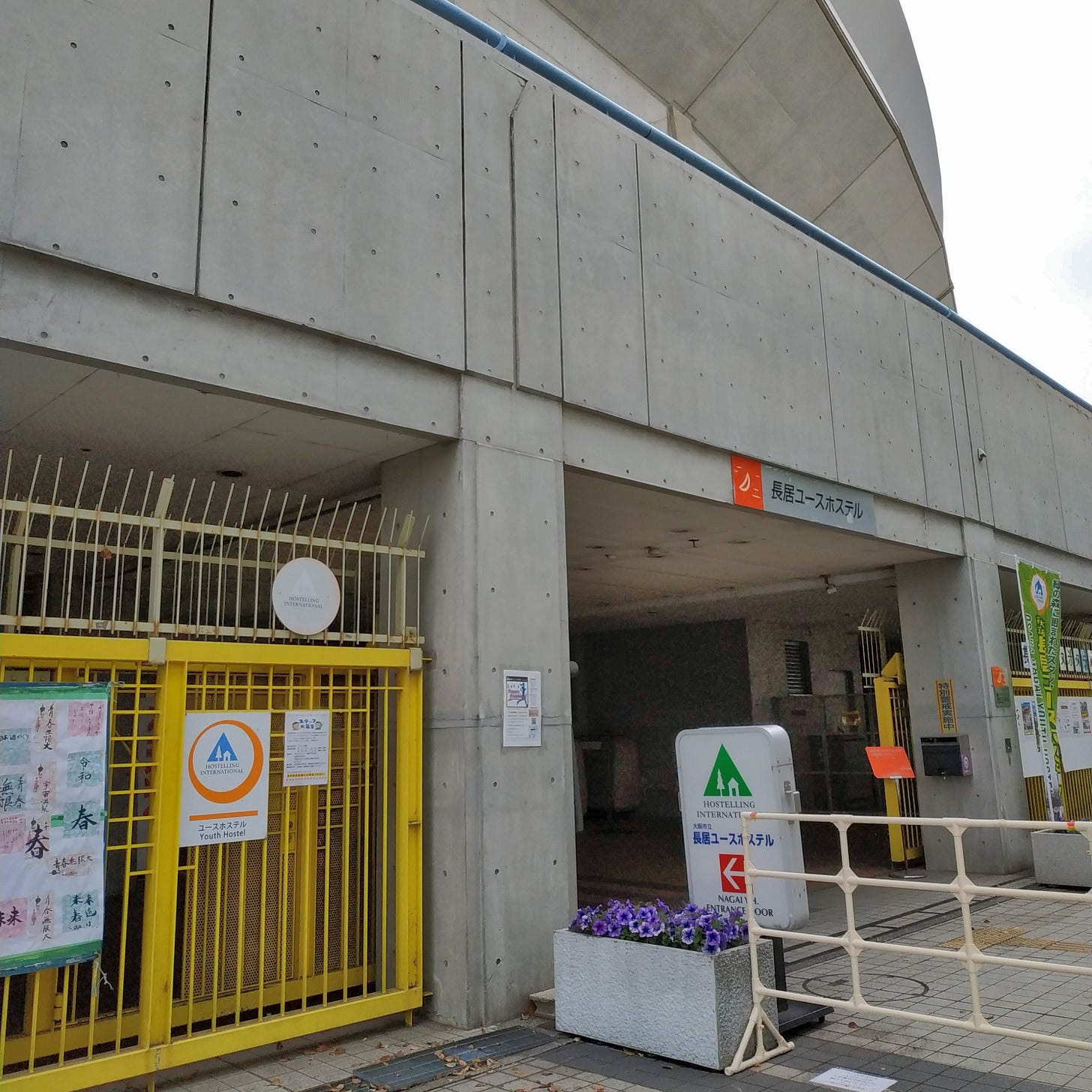
I even learned that there is a “Municipal Youth Hostel” inside of the stadium!
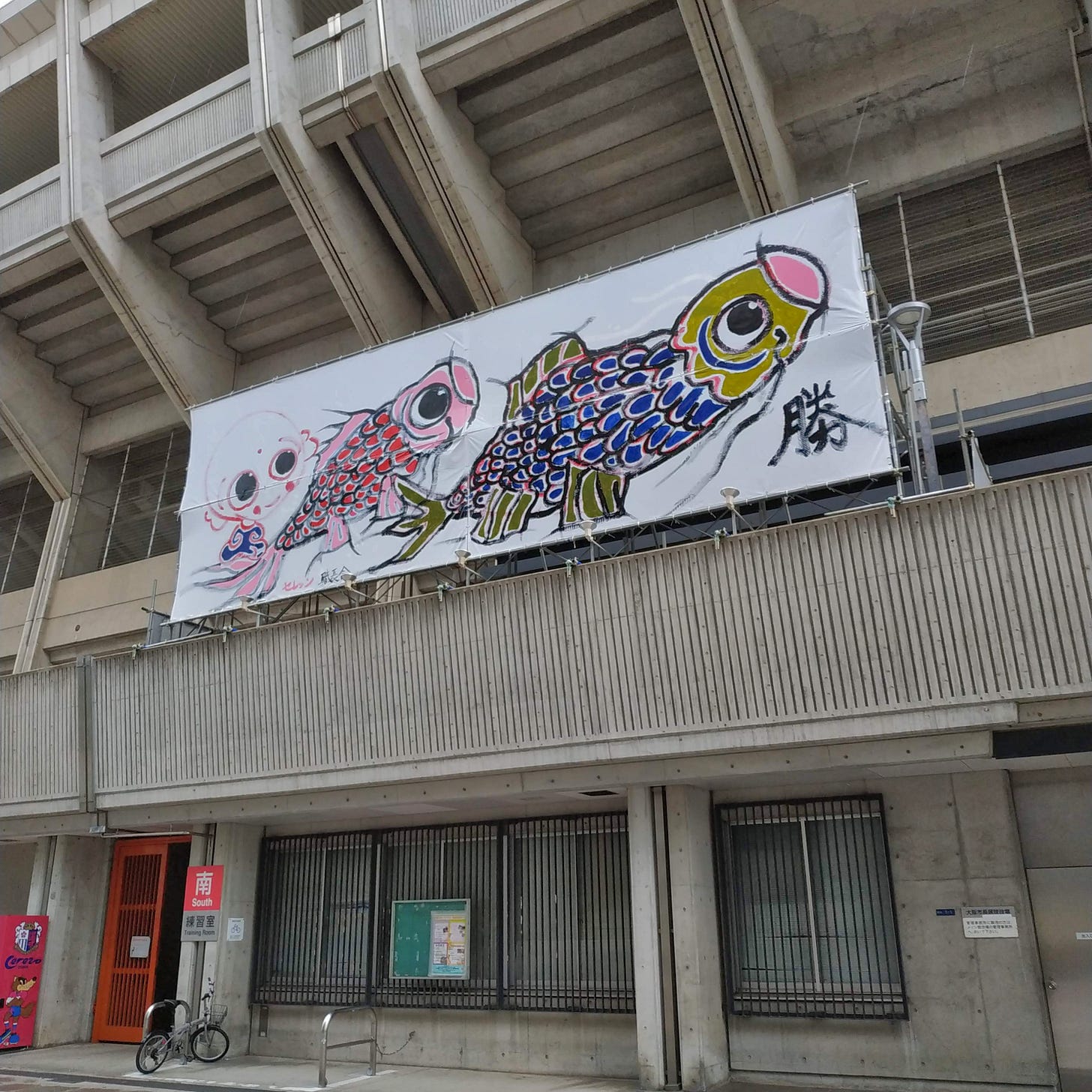

One thing I noticed near the stadium was this non-representational architecture. In context, there is also a ball that is split in half just like it. So maybe it actually is representational of soccer. As a more abstract work, the meaning that we get out of it depends on what meaning we put into it. By existing outside of the world of common symbols (representation) it requires extra work from the inquisitive.

The space around the stadium is very flat. The view of the outside world is blocked and so the paths feel disconnected. There are no spatial pressures that guide you away from the stadium in any particular direction. The only pressures are upward into the stadium and the parallel pressure that encourages you to travel around the stadium in a circle. The objects around the stadium help establish a perspective and enhance the largeness of the structure.
People don't go to Nagai stadium to experience the place itself (unless they are a local or an athlete), they generally go for an event like a baseball game or a concert. This means that if the place has an aesthetic or an inherent greatness it would likely be overshadowed by the events themselves. People would misattribute the positive or negative vibes of the space as exuding from the event.

Yesterday, I walked from Nagai station on my way back home. I used the streets near the railways zigzagging along streets. The experience of walking from Tsurugaoka to Nagai station via Nagai park was polar opposite to the experience of walking through the city streets. The minor streets have little vegetation and mostly feel like clean industrial areas.

After thinking about the non-representational architecture at Nagai park. I decided to visit Umeda because I struggled with the area during my first visit last year. It was my least favorite area because it was so confusing and stressful. My goal of walking to Umeda was not very helpful in achieving a dérive state because I would often look at my map to check if I was heading in the right direction.
The reason I’m trying to attain this dérive state—to lose my sense of spatial relationship outside of the current space—is because I feel that I can see and feel more. I can experience a truer version of the space itself than I could experience otherwise. When I can let go of the relationship between the location and the city as a whole, I feel more connected to the current environment. My goal is to experience the place for what it is by itself and discover the raw forms which shape our experience with spacetime.
Transportation systems act as extensions of our feet but they often fail to provide the same spatial and gravitational feedback on our bodies. We don't feel like we have traveled far when we in reality we might have traveled very far.
It was raining so I decided to board the subway and go some place else. Perhaps a space less rainy in the spatial-temporal sense. When I boarded the traincar I didn't particularly care how this sought out reality would be named. We often get manipulated by the linguistic aspect of our culture. Depending on how and where we are raised we may prefer the names of certain places because they sound familiar or start with the same vowel sound as our first name. But the base of my decision had similar fault. I chose the place that sounded the least familiar. I still relied on the same linguistic-temporal engine.
… the distributed nature of cognition – that the cognitive work of people cannot be understood without reference to other people, and external artifacts in the environment that serve to increase or offload cognitive demands (e.g., serving as an external memory).
I also wanted to travel far (to make the journey into the depths of the subway worth it), but not too far (to keep the depths of my wallet intact). I chose Hommachi, I knew nothing about it but when I got there it wasn’t raining.
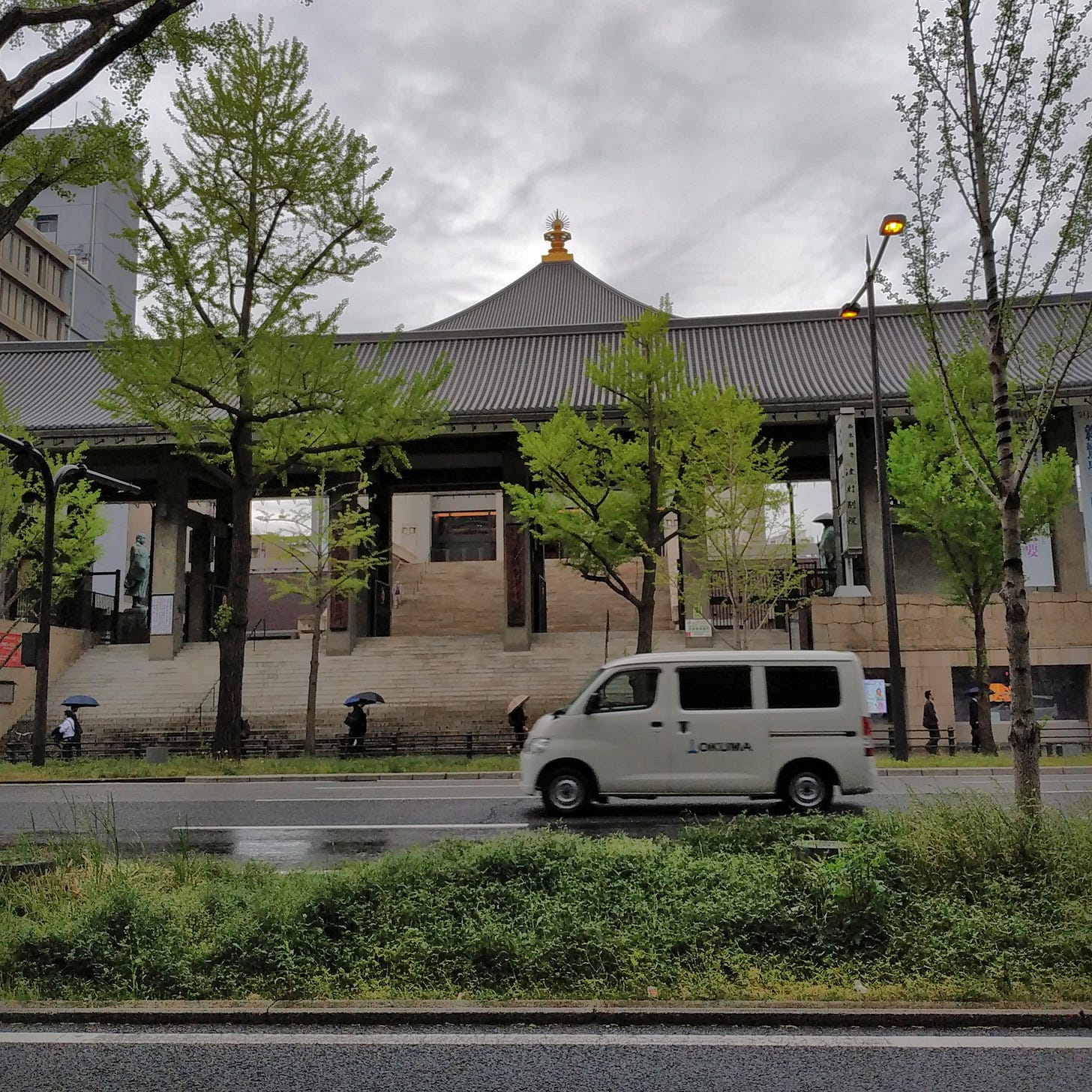

As I was exiting the station I almost tripped on a slim slippery surface. Not all surfaces are created equal.

Some surfaces are quite slippery when only a little wet. This is not safe for pedestrians even though it may look nice. Cars on the road generally have the same experience on any road because roads are usually constructed with the same asphalt. Asphalt has a lot of traction so it feels very solid to walk on even after rain.

I think this is a good sidewalk. It feels very safe

This one is good too. They figured it out here.
It seems that Hommachi is a business district but I actually kind of like it. It’s quirky. It seems more liveable than Ginza.

Lots of interesting buildings that capture your attention and act as landmarks

And many nice office buildings

And old buildings

And experimental buildings
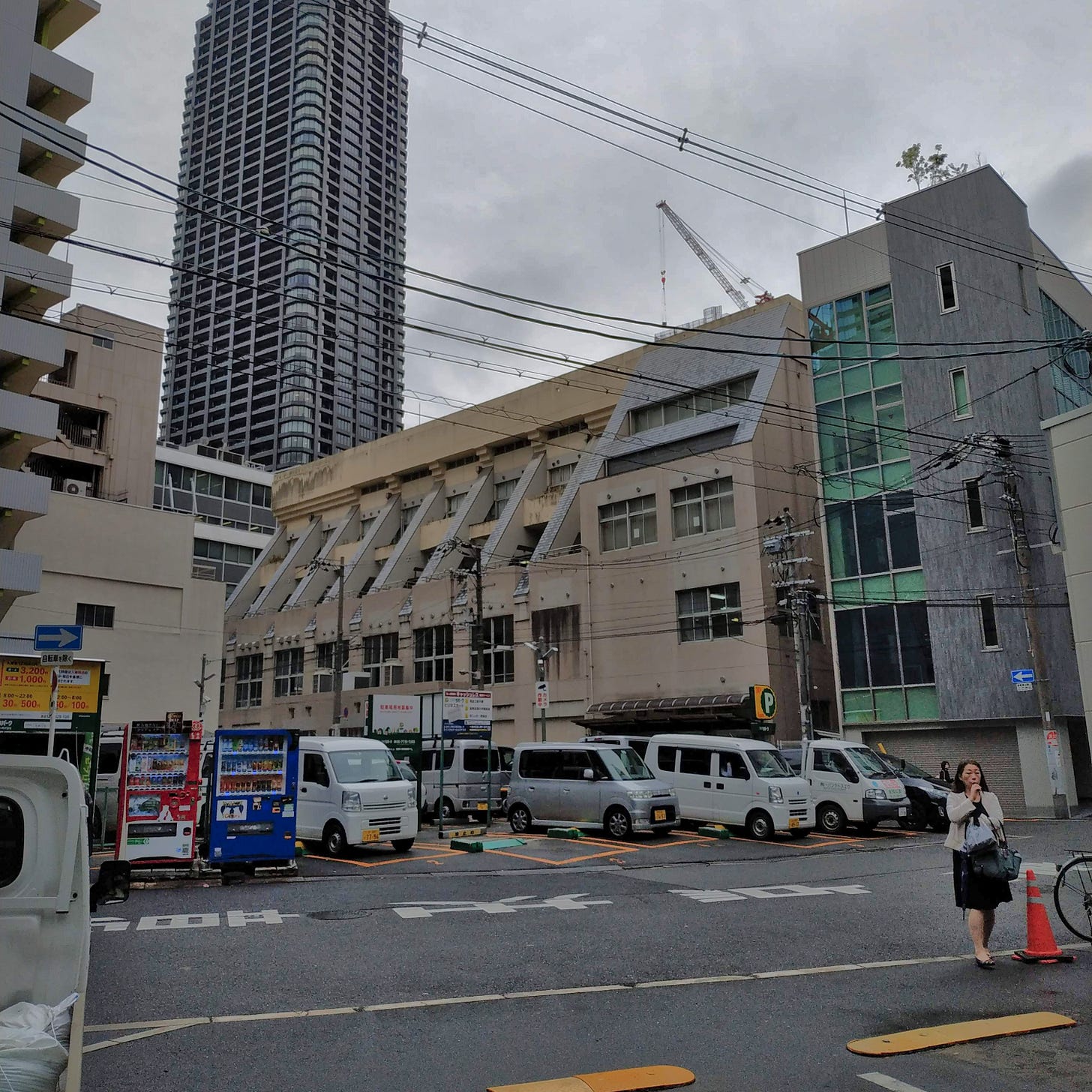
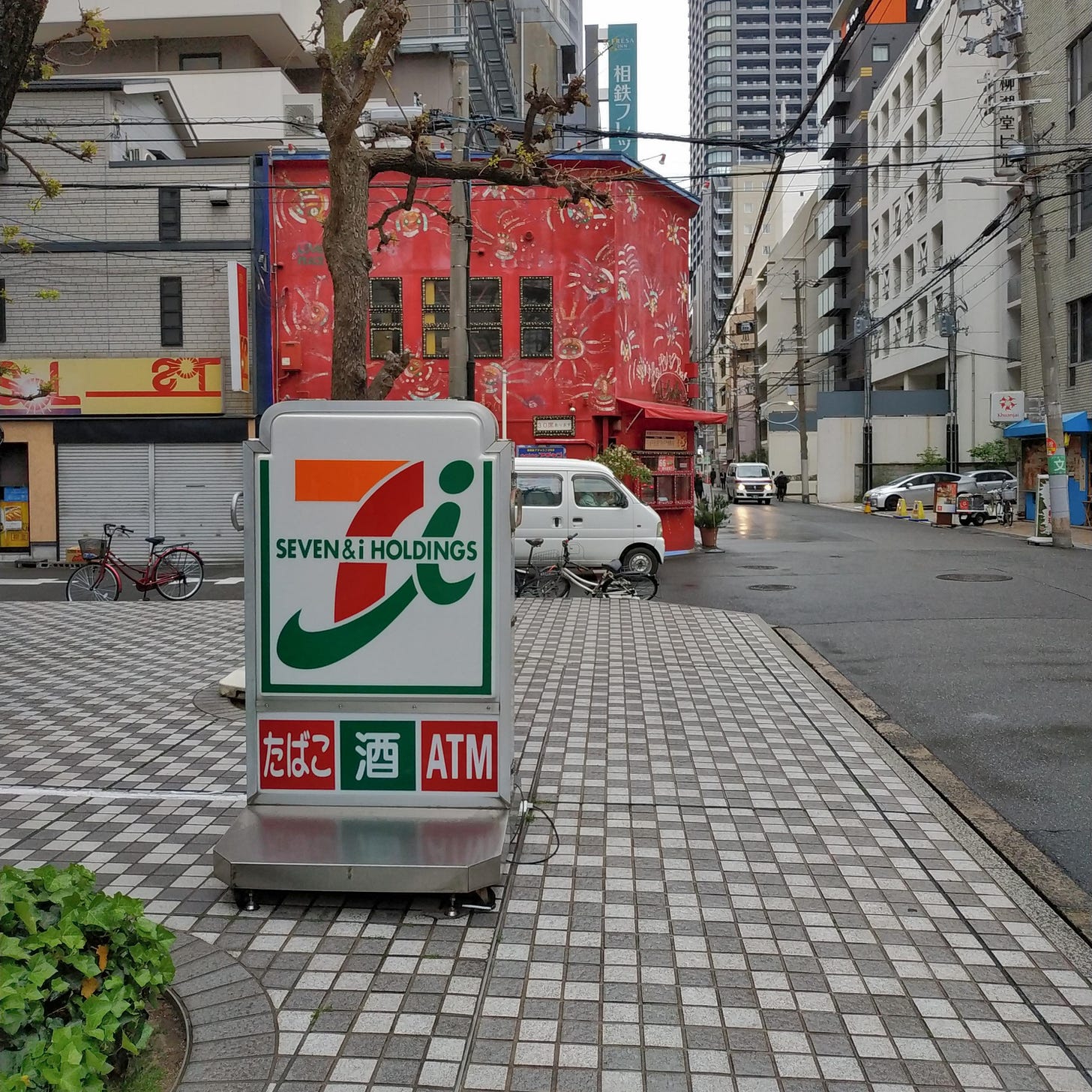
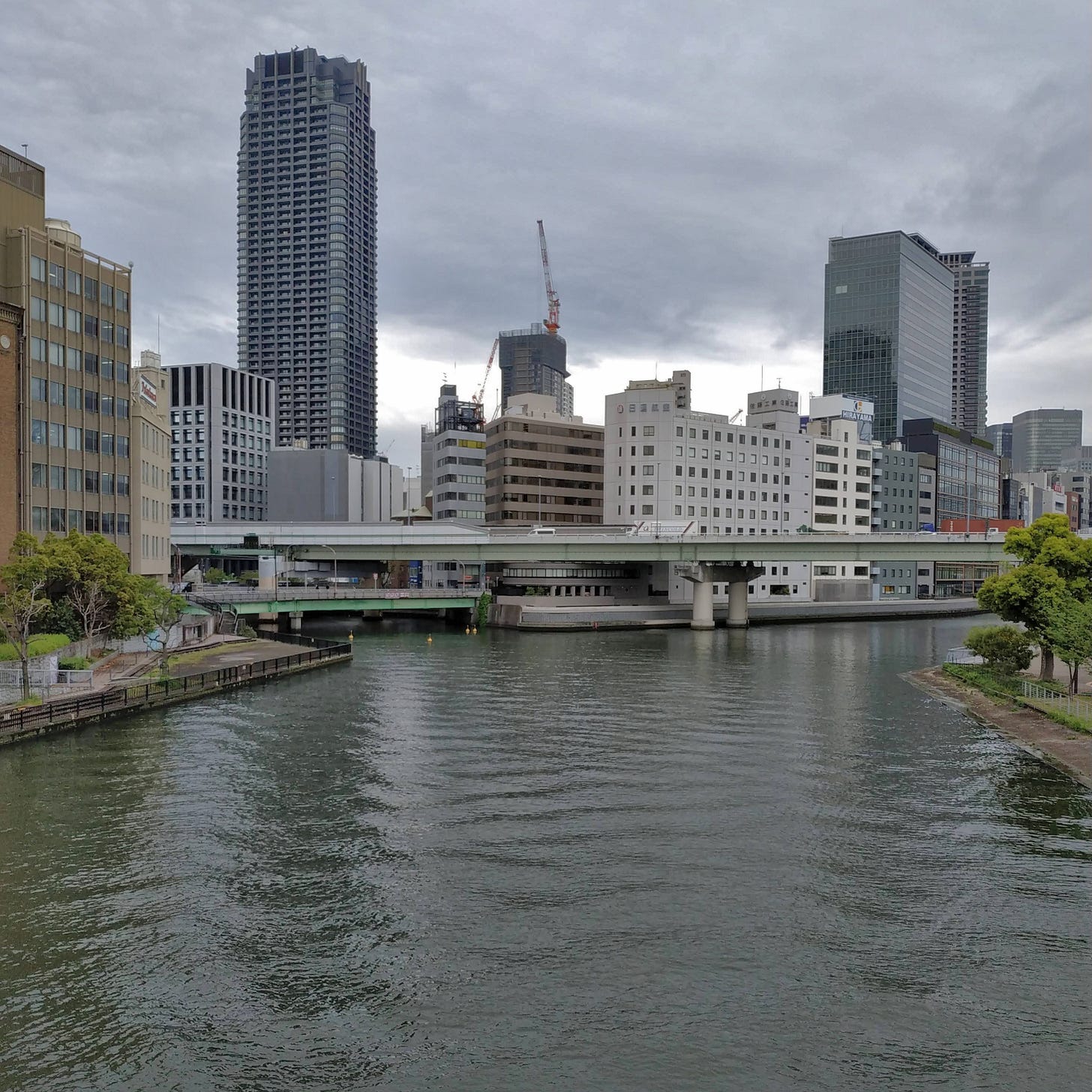

buildings to make you hungry

I don’t like overpasses as much as underpasses. They are more in your face and unnecessarily take up space. I made it to Umeda though.

To be frank, I don't like some areas near Umeda station. The streets are a lot wider and more spread out. Hommachi seems to have just many big buildings but you can still understand the function of those buildings and even read the price of stuff on the menu of the building across the street. The readability of Hommachi decreases stress and it helps people navigate. But in many areas of Umeda the buildings are so spread out that you can’t understand the purpose of buildings. The space around the buildings is for the most part wasted and only momentarily used by passing cars.
And then there is the thing where every other building tries to surround the building with a park for people too busy to go to the park. It might work for others but for me I don’t feel the space works.


I’m not sure what this is
It's as if you were going somewhere for a long time, and when you got there you discovered there was nothing there, after all.
author unclear
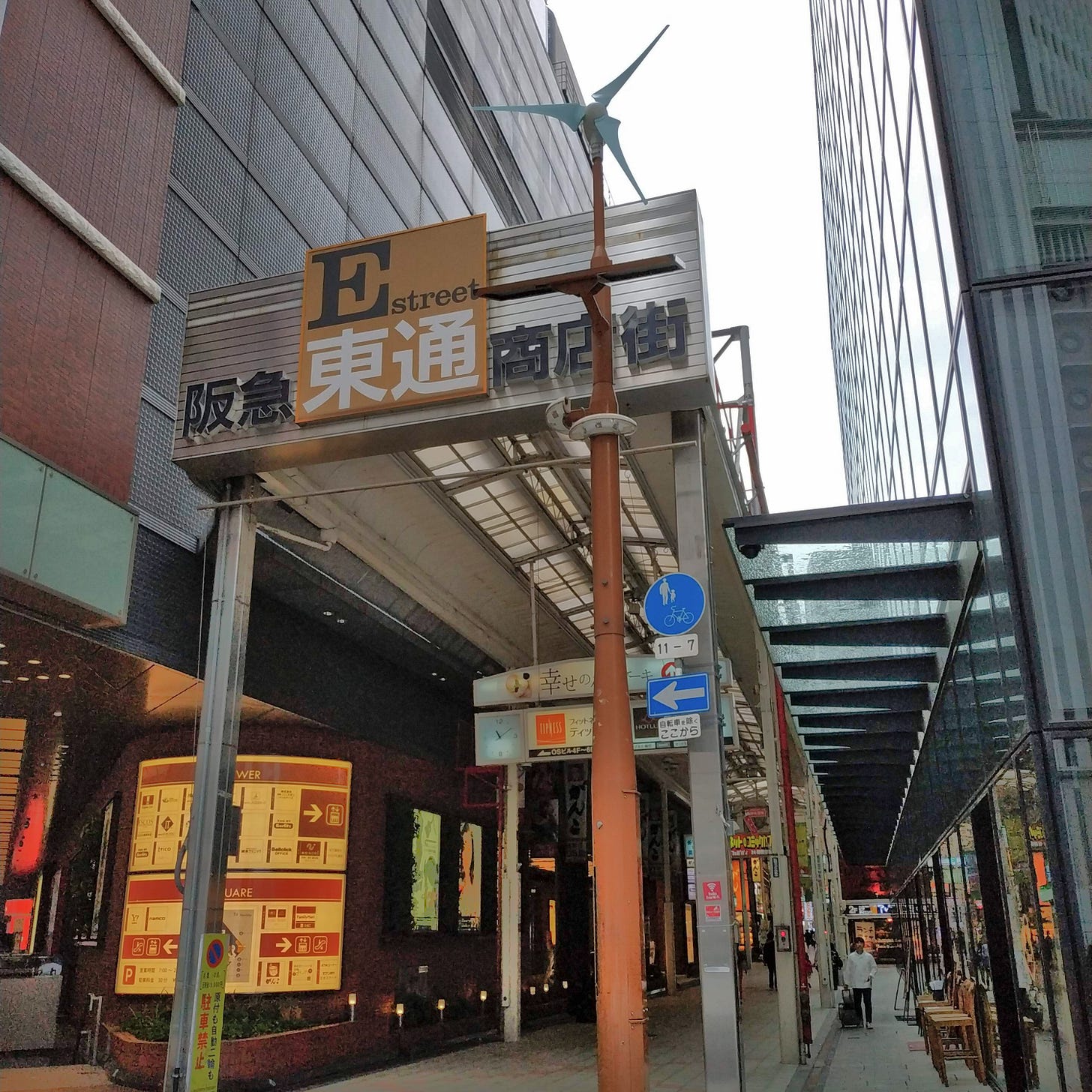
Umeda is not all bad. Today, I realized that there are some nice areas. Like the covered market areas.


The underground mall is now more than a mall. It gains functionality as a human feet transport network: sprawling underneath the city as a miniature representation of the city itself.
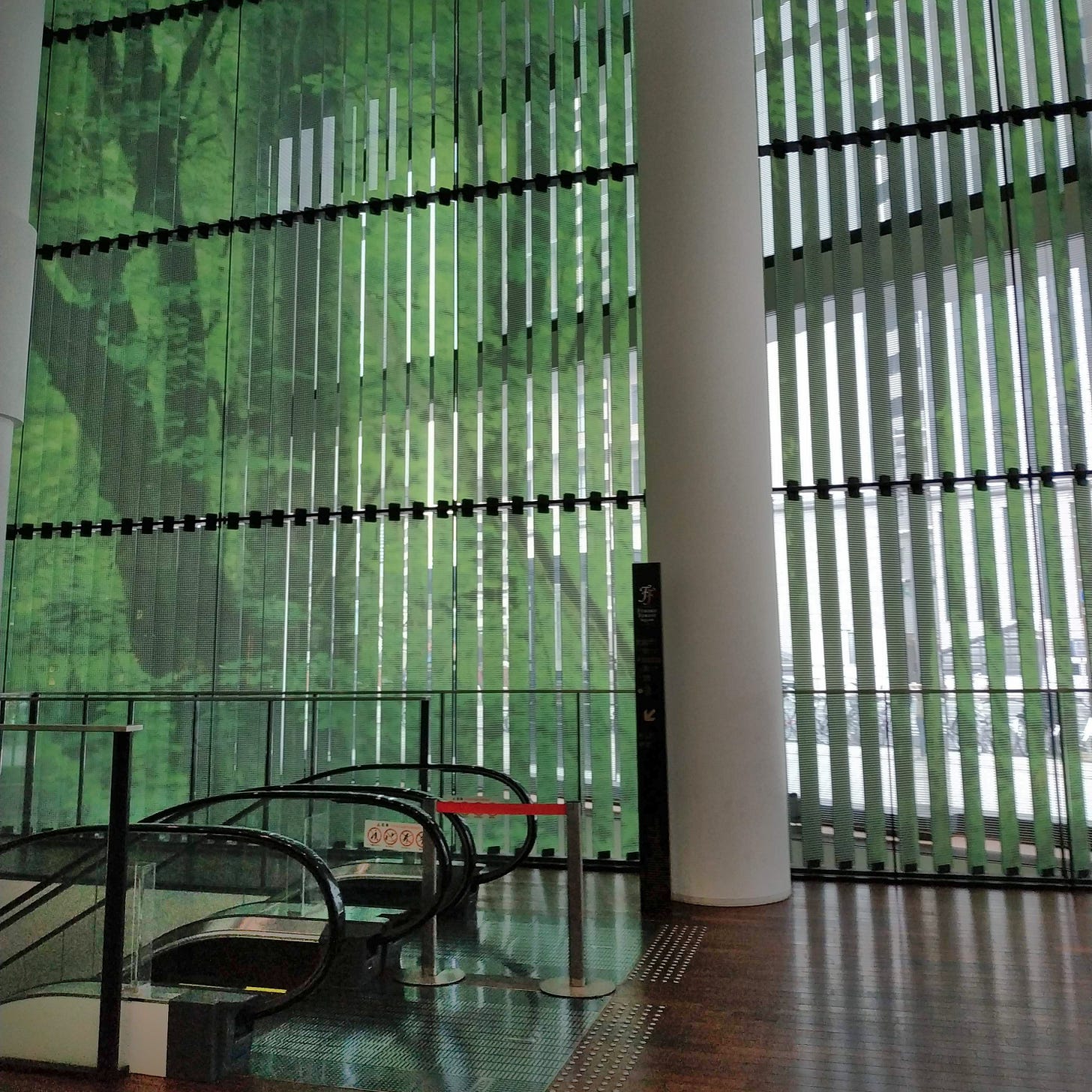
There are many different entrances to this mall. It connects buildings as an alternate to the outside, fallen car-world. In Umeda, humans are supposed to be inside. The outside world offers little function other than to connect to other buildings. The underground world has more functions and interfaces for human interaction.

I ate some food and was able to get back into the dérive state after about thirty minutes of walking. Passing through doors or portals is very helpful because it helps to "reset" the cognitive pressure of walking through an area. Maybe it's because our mind is always recording the area so that we cab remember how we got there. Walking through doors or portals (like a subway exit, or coming off a freeway ramp) puts our event model into a"detached" state.
I think it's entirely possible that the paths that we take to an area influences our experience and interpretation of the destination itself. Of course if the journey puts us in a sour mood that's an obvious inhibitor of us experiencing the destination's built environment. Another factor for our consideration is how meaning is built upon meaning. We experience the environment in relation to environments that we have previously visited. Our memory of environments is often short-term and so the meaning that we have gathered from the environment changes how we interpret the next environment.
Passing through portals changes a journey into more of a pilgrimage. We experience the built environment in a truer sense. We compare the environment to our long-term memory of environment because our short-term spatial event model has been reset.
Transportation systems change the prior environment. For the most part this is short-term but transportation environments can also turn into long-term memories.
If we lived in a village and we are used to walking 5 miles to go to a certain place then we would experience these two areas as relatively far away. We would associate the hour or two of journey and tiredness with the destination environment.
If a train was built connecting these two places then the meaning has changed substantially for us individually but also as a local community and even globally. Yes, the two areas are now associated in our minds as being near each other; we no longer see the destination as a tiring place. But the implications are much more than that. People now bring into the environment much different short-term spatial memories. The diversity of interpretation of the place explodes as faster transportation systems decrease the spatial relationship between these two places.
I was able to be okay with not knowing where I was all the time. Of course I knew I was probably still in Osaka but it felt freeing to not have to know where exactly.
Massive transportation systems like Japan's bus and railway create new networks: paths between places. Direct paths are constructed which never could have existed with prior transportation systems.
Places are experienced in novel sequences. The creation of new spatial sequences creates new meaning. Different features are emphasized through contrast to the area previously visited.
In major cities, freeways are often constructed to exist in a separate world. Freeways are concealed through careful integration with the landscape and construction of barriers.
Transportation systems like subways present city planners with an opportunity to create pilgrimage-like experiences. If an area feels more separated spatially then people they probably feel like there is opportunity to create a different style or maybe they feel like they have more responsibility and freedom to modify their environment and make it their own.
Where major paths lacked identity, or were easily confused one for the other, the entire city image was in difficulty (many of the paths in Jersey City difficult to find, both in reality and in memory).
Kevin Lynch
Buses can also have a similar pilgrimage-like experience but only if we can ignore the outside world or if the outside world is obfuscated while we ride it. This might take the form of very wide roads which hide the internal structures of the city. Multi-lane roads are very often bad urban design but almost everything has a few positive sides to it. A wide, multi-lane road can allow a person to pass through a city while completely obfuscating it—like highway barrier walls but much more invisible. The distance of buildings to the perceive creates an alienation and blur at the same speed as the inverse-square law.
The obfuscation of space does not need to happen during all points of the journey to create a pilgrimage-like experience. Near Nampo, Busan there are quite a few bus stops that mask the surrounding area. As the bus enters the enclosed bus stop space, the bus leaves a shared liminal space to an exclusive liminal space. By highlighting the passing-through-ness of travel, the destination is made more distinct. Like cleansing one’s pallet, resetting the event model is important when entering a new place—if only for aesthetic reasons. (I must wonder, however, if this resetting of event-model causes personalities to become slightly more introverted. Because doors and pilgrimage-like experiences like this are experiences which cause event-model resets people must practice the ability of keeping a train of thought in order to have a consistent state of mind.)
In film theory, attention is carefully controlled. Background objects are meticulously decided upon and custom built for the set. Purposeful film directors and crew members have mastered the use of image stability but also image confusion. Like a magic trick, sequences are blocked to confuse and distract when useful to the story. I think city planners can start to do this too. Maybe they already have. As I let myself drift across different areas I found myself sometimes looping back into specific places without meaning to.
Maybe cities are mediated by transportation systems. Maybe cities are transportation systems.
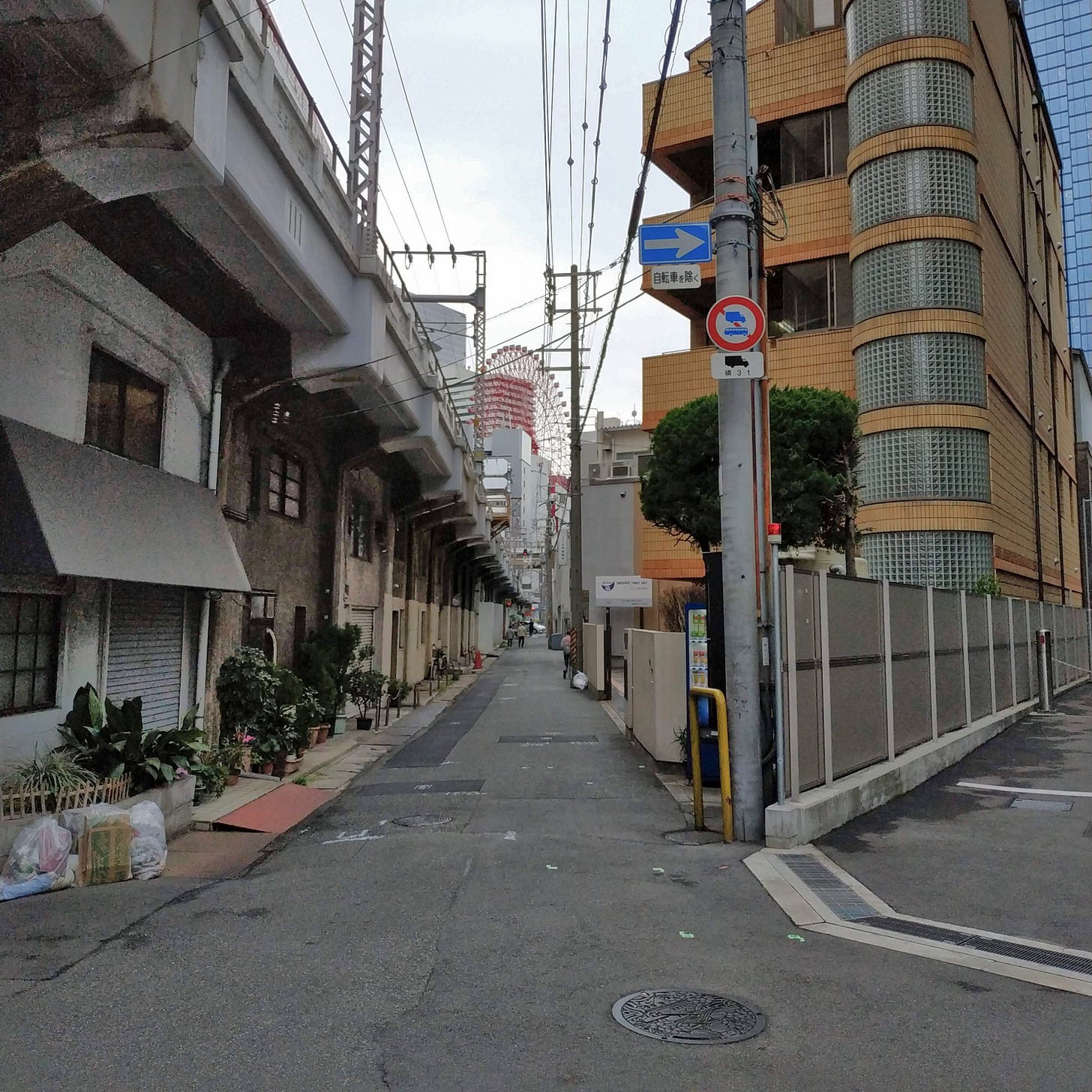
I started to pay more attention to landmarks (the local relationship of spatial objects) and less attention to the map (an objective representation of those objects reprojected to Bird's eye view).

Kevin Lynch describes a list of things his analysis in this book won’t focus on but things which people emphasize to contrast different areas:
spatial contrast
status contrast
use contrast
relative age
cleanliness
landscaping
social meaning of the area
emotional significance
functionality
history
changes, such as those wrought by the freeway system have left scars on the mental image. The interviewer remarked: 'There seems to be a bitterness or nostalgia among natives which could be resentment at the many changes, or just inability of reorientate fast enough to keep up with them'.
Kevin Lynch
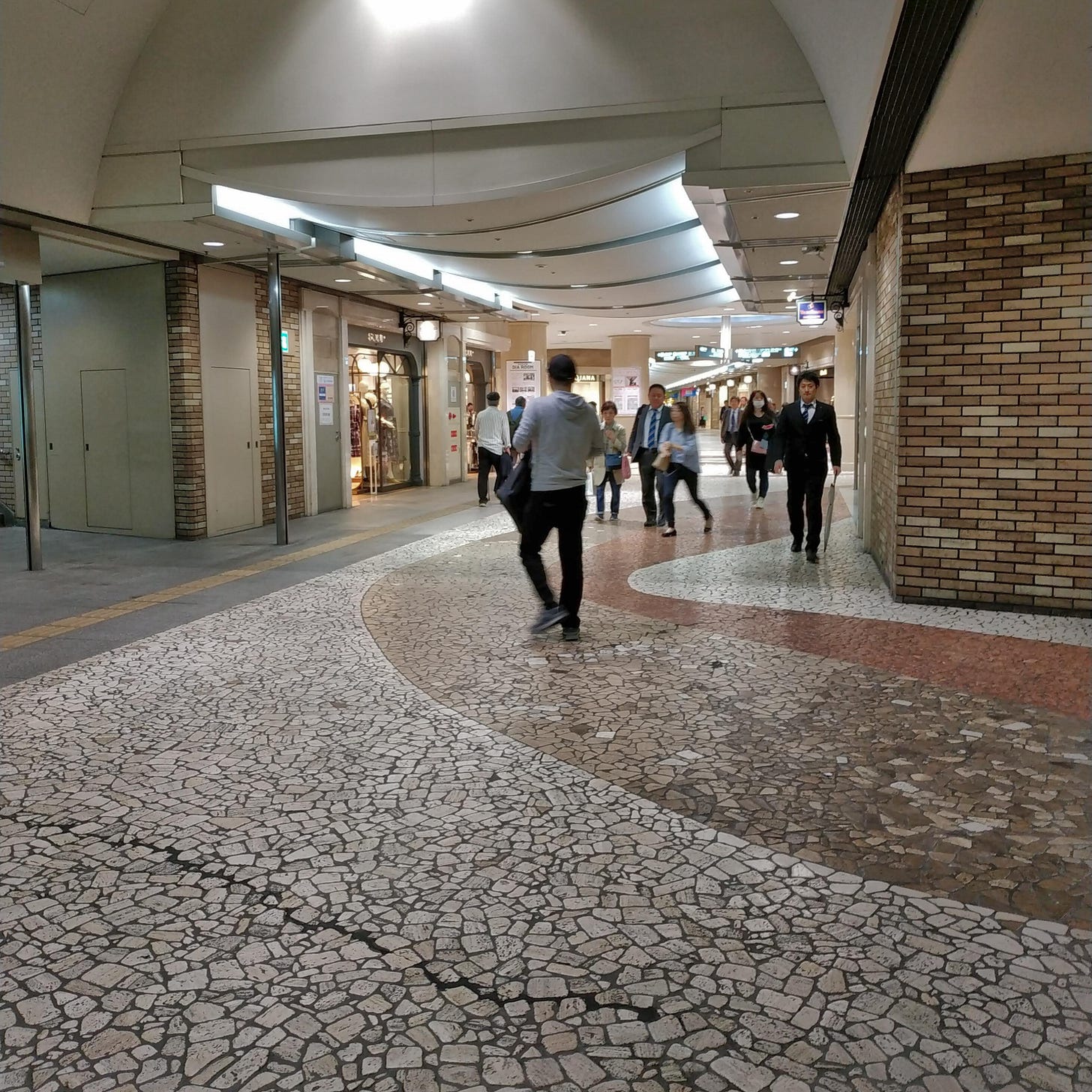
At Umeda-Shimmichi, the streets underground are much, much more active than the streets above. There were only a few people walking through the shops on the surface even though it hasn’t rained for several hours.
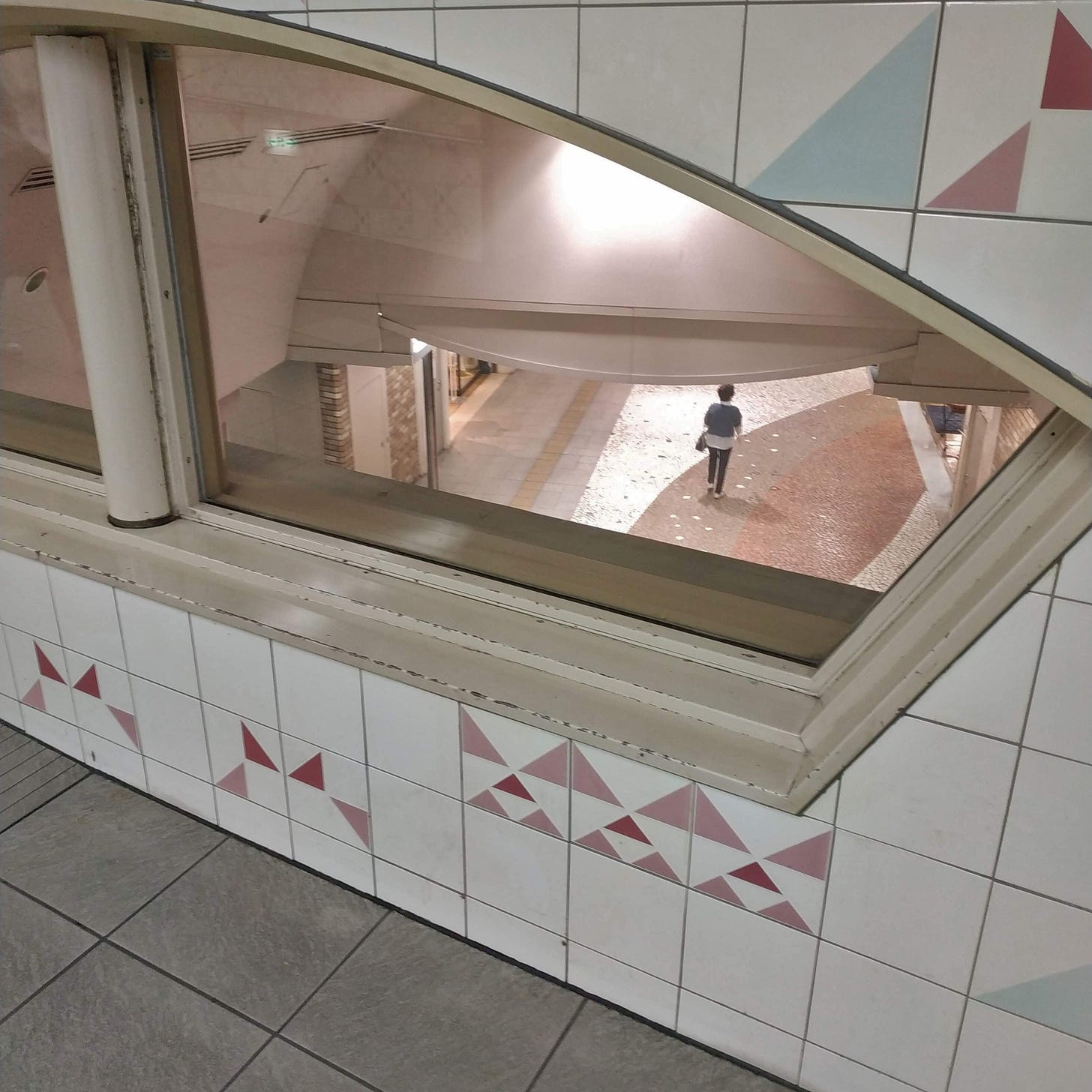
a true underground labyrinth: sprawling at least a kilometer with multiple levels

In the end of my walk I return to Tsurugaoka. I like this area quite a bit. I often see more people on bikes here than regular pedestrians. It’s a very fashionable area with its own taste.



